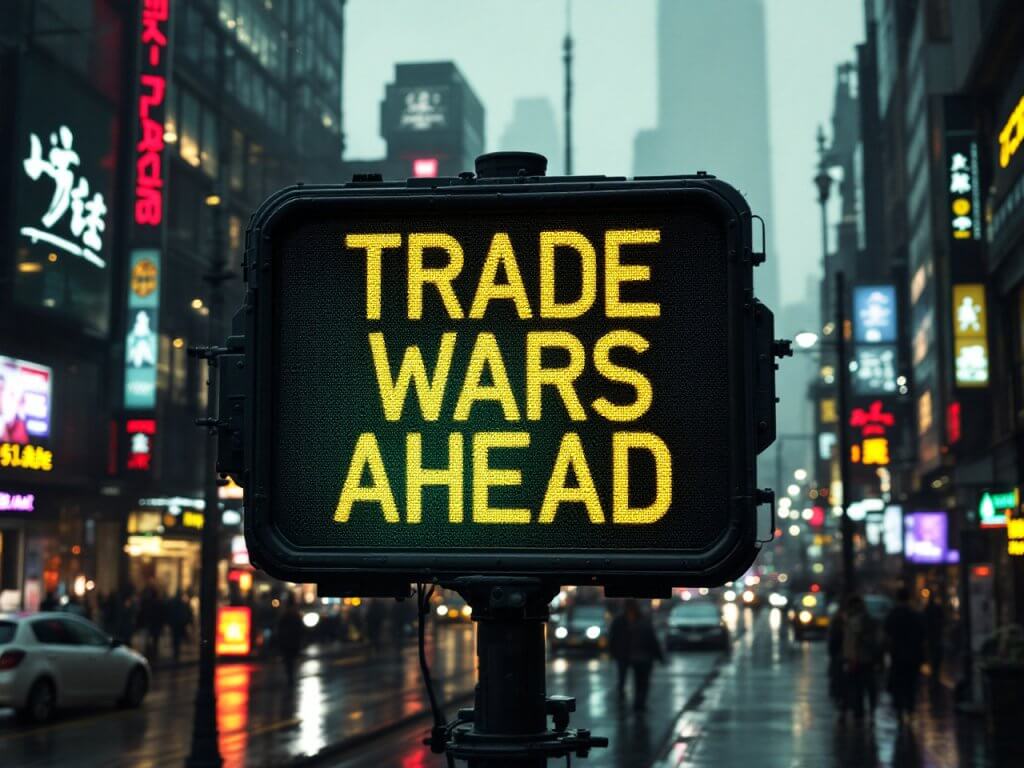
Market Size and Growth in 2025
The global dating app market continues to expand in 2025, with industry revenues in the multi-billion dollar range. Recent analyses estimate the market was valued around $7–8 billion in the early 2020s and climbing steadily. For instance, one forecast valued the online dating market at $7.22 billion in 2023, projecting it to reach $13.14 billion by 2030 . This implies a healthy growth trajectory (mid-single-digit to high-single-digit CAGR) over the decade. Another analysis similarly projects the market will roughly double from ~$5.6 billion in 2025 to $11.3 billion by 2034 (≈8% CAGR) , underscoring sustained expansion. The growth is fueled by rising smartphone adoption, greater social acceptance of online dating, and continuous innovation in app features.
In terms of users, hundreds of millions of people worldwide use dating apps. Recent data suggests roughly 350 million people globally are active on dating apps , equivalent to about 4% of the world’s population. This user base has grown from an estimated ~250–300 million a few years prior, reflecting the mainstreaming of app-based dating. The market is truly global – while North America and Europe contribute significantly, growth is increasingly driven by Asia-Pacific and other regions as internet connectivity spreads . Overall, online dating is now a mainstream phenomenon, no longer a niche or stigmatized activity, and the industry’s value is poised to keep rising with forecasts in the $10–13+ billion range by 2030 .
(Note: Different market research sources define the “online dating market” slightly differently – some include all services and revenue streams, others focus on dating apps specifically. But all indicate steady growth.) The competitive landscape is also very crowded – there are over 8,000 dating platforms worldwide vying for users’ attention . This intense competition drives platforms to innovate and differentiate to capture a share of this growing market.
User Behavior and Demographic Trends
Who uses dating apps and how they use them has been studied extensively. Demographics show that usage is highest among younger adults and gradually declines with age. In the U.S., about 30% of all adults have used a dating site or app, but this skews heavily toward youth: over 50% of 18–29 year-olds have ever tried a dating app, compared to only 13% of those 65+ . The core user base globally tends to be Millennials and Gen Z (roughly ages 18–40), although usage among older groups is growing (for example, Match.com reports its 50+ segment is its fastest-growing in recent years) . There is also a slight gender imbalance on many platforms – surveys indicate men are somewhat more likely to use dating apps (e.g. 34% of U.S. men vs 27% of women have used one) – though certain apps, like Bumble and SoulMatcher, have succeeded in attracting a higher proportion of women users . Additionally, individuals in the LGBTQ+ community use online dating at higher rates (over half of LGBTQ adults have used an app) compared to straight individuals , since apps provide a valuable way to meet others in their community.
User intentions and preferences on dating apps vary. Not everyone is solely looking for marriage or a life partner – in fact, the market serves a spectrum of relationship goals. Surveys show roughly 44% of online daters are looking for a long-term partner, whereas about 40% are looking for more casual dating or hookups . The remaining users may be seeking friendship or other connections. Notably, a growing trend is using dating apps for social networking or friendship in addition to romance. For example, SoulMatcher reported that 50% of its young adult users use the app to “meet new people” (friends) rather than strictly for dating – indicating a blurring of social and dating use-cases. This aligns with broader trends like Bumble’s introduction of “BFF” friend-finding mode and other apps emphasizing community. In terms of features, younger users (Gen Z & Millennials) increasingly prefer more interactive and authentic experiences – such as video chatting, virtual dating features, and personality-based matching – rather than just swiping photos . Apps that offer video profiles, in-app games, or deeper profile prompts cater to this demand for richer interaction.
Willingness to pay is another important aspect of user behavior. While the majority of dating app users stick to free versions, a significant portion are willing to pay for premium features or subscriptions if it promises better outcomes. Around 35% of online daters have at some point paid for a dating platform’s services – whether that’s buying a subscription or paying for one-time features. This indicates that roughly one in three users is open to spending money to improve their dating prospects. In absolute terms, there are tens of millions of paying users globally: for example, the Match Group (which owns Tinder, Hinge, OkCupid, etc.) alone had about 14.9 million paying users in 2024 across its products . However, conversion to paid tiers is still a minority – meaning most people use the free functionality and only a subset become subscribers. Typically, those who pay are either power users or those particularly motivated to increase their chances of finding a match.
Several pain points have emerged in user behavior on mainstream apps, giving rise to terms like “dating app fatigue.” Many users find that endlessly swiping through profiles and exchanging superficial chats can become tiring over time . There’s also a paradox of choice – with so many potential matches available, people can feel overwhelmed or constantly unsure if someone better is a swipe away . Additionally, mismatched intentions (e.g. one person looking for serious commitment while their match wants something casual) often lead to frustration . Issues of trust and safety are noted too: some users misrepresent themselves or behave badly, causing others to become more cautious. These trends are important because they are shaping what users want now: there is growing desire for more meaningful connections, greater trust/safety, and less time wasted on incompatible matches. This shift in user sentiment is part of why new models (like exclusive or curated dating services) are gaining attention in 2025.
Key User Insights (2025):
• Mass Adoption: Online dating is mainstream, with roughly 300–350 million users worldwide and about 3 in 10 U.S. adults having used a dating app . Usage is highest among younger adults (over half of under-30s) and lower among seniors.
• Relationship Goals: Users’ goals are split – surveys show ~44% seek long-term relationships while ~40% seek casual dating on these platforms . Others use apps for friendship or networking, a use-case especially embraced by younger users and apps like Bumble (BFF mode) and SoulMatcher .
• Paying Customers: Only a minority of users pay, but it’s still significant. About 20–25 million people worldwide are paying subscribers (roughly 6–7% of total users), and 35% of online daters say they have paid at least once for premium features . Tinder alone has ~9–10 million subscribers, and Match Group’s total paid user base is ~15 million .
• Preferences & Trends: Women users favor apps that offer more control or safety (e.g. Bumble’s women-message-first, or verified communities), and the LGBTQ+ community relies on apps (over half have used one ) with niche apps like Grindr serving them. Gen Z daters gravitate toward apps with video features, personality tests, and authentic profiles . Overall, there’s a push for quality over quantity – many users now prioritize finding fewer but more compatible matches rather than swiping through hundreds of profiles.
These behavior trends set the stage for how dating apps are evolving their features and business models in 2025 to meet user expectations.
Revenue Models of Top Dating Platforms (Tinder, Bumble, Hinge, etc.)
The leading dating apps globally – Tinder, Bumble, Hinge, and others – almost all operate on a freemium revenue model. The freemium model means the basic app is free to download and use (allowing users to create a profile, browse and match), but advanced features and perks require payment. This approach has become the industry standard: it maximizes user adoption by removing upfront cost barriers, then monetizes a fraction of users through subscriptions or in-app purchases. In fact, the dominance of freemium is cited as a key driver of the industry’s revenue growth . Major revenue streams include premium subscription plans, à la carte in-app purchases, and advertising (to a lesser extent). Let’s break down how top platforms make money:
• Tinder: The world’s highest-grossing dating app, Tinder, earns revenue primarily via its tiered subscription plans and paid features. Tinder’s base app is free, but it heavily promotes upgrades: Tinder Plus, Gold, and Platinum. These subscriptions (priced roughly from ~$10 up to $30+ per month, varying by region and age) offer perks such as unlimited swipes (the free version limits how many profiles you can like per day), the ability to see who “liked” you, more advanced filters, unlimited rewinds (undoing a swipe), and passport mode (to match in other locations). Higher tiers like Gold/Platinum include even more perks (like message before matching or being shown to more users). Tinder also sells à la carte features: for example, users can buy “Boosts” to promote their profile for 30 minutes, or “Super Likes” to signal extra interest – these are one-time purchases that enhance visibility. Combined, this model is extremely lucrative: Tinder alone generated nearly $1.95 billion in revenue in 2024 , and had 9.6 million paying subscribers that year (out of ~60–80 million active users). Advertising is a smaller component of Tinder’s model, but it does occasionally integrate sponsored content (e.g. swipable ads or branded profile cards). By and large, subscription and in-app purchase revenue drives Tinder’s success, contributing to Match Group (Tinder’s parent company) earning $3.5 billion total in 2024 . Tinder’s strategy exemplifies the “keep users swiping” philosophy – it continually introduces new paid features (recently AI-powered matchmaking suggestions and profile videos) to keep engagement high and encourage upgrades.
• Bumble: Bumble has a similar freemium model but differentiates itself with its branding and some feature twists. Bumble’s core app is free with the unique rule that women must initiate the conversation in heterosexual matches (a USP aimed at creating a women-friendly environment). Bumble monetizes via two subscription tiers: Bumble Boost and Bumble Premium. Boost (the cheaper tier) offers features like extending expired matches (normally matches expire in 24 hours if no message), unlimited swipes, and backtracking on swipes. Premium (higher tier) includes seeing the queue of who already liked you (so you can match instantly), advanced filters (by height, education, etc.), and the ability to rematch expired connections and use travel mode. Bumble also sells one-off Spotlight (to be shown to more users in your area for 30 minutes, akin to Tinder’s Boost) and SuperSwipes (similar to Tinder’s Super Like). While Bumble’s user base is smaller than Tinder’s, it still has tens of millions of users (over 45 million users as of a couple years ago) and a few million subscribers. Bumble Inc. reported about $1.07 billion in revenue in 2024 , indicating steady growth, and its paying user count is over 2 million (exact figures vary; Bumble’s ARPU tends to be a bit lower than Tinder’s). Bumble also explores monetization beyond dating: the app has Bumble BFF (friend-finding) and Bumble Bizz (professional networking) modes – while these are free, they keep users within the Bumble ecosystem which can funnel more engagement to the dating side. Like others, Bumble has some advertising partnerships but primarily relies on user payments. In 2025, Bumble’s strategy includes adding new premium features (e.g. voice and video chat options for premium users and other safety features) to justify subscriptions .
• Hinge: Hinge markets itself as the app “designed to be deleted,” emphasizing quality matches for relationships. It too runs on a freemium model. Initially Hinge allowed fairly free use with some limitations, but in recent years it introduced stricter limits on free users and new paid tiers. Currently, Hinge offers Hinge+ (formerly called Preferred) and HingeX as its subscription options. The free version of Hinge limits users to a certain number of likes per day (often around 8–10 likes); once you hit the limit, you must wait or upgrade. With Hinge+ (approximately $30/month), users get unlimited likes, can set advanced preferences (e.g. filter by religion or desire for children), and see everyone who liked them. HingeX (around $50/month) is a higher tier that additionally promises to show you the most “Compatible” or highly recommended profiles first (using Hinge’s algorithm), essentially giving an advantage in finding top matches, and includes a few free Roses per week (Hinge’s version of a Super Like) . Hinge also sells Roses separately; by design, the free Hinge user only gets a limited number of Roses to send to stand-out profiles, so many users purchase extra Roses to improve their chances with popular profiles. All these techniques have made Hinge a strong revenue generator among serious daters. Hinge is owned by Match Group and has been one of its fastest-growing brands – in fact, in 2024 Hinge’s revenue grew significantly (Match Group cited a 23% increase in Hinge’s paying users and 13% higher ARPU that year) . Hinge does not have traditional ads; it focuses on subscription and in-app purchase revenue. Its model shows how even an app oriented toward relationships uses typical freemium mechanics (limited likes, etc.) to encourage upgrades, balancing helping users find love with sustaining engagement.
• Other Platforms: Nearly all other major dating apps follow variants of these revenue models:
• Match.com / eHarmony: These older services use a subscription-only model (users generally must pay to communicate). They have various plan lengths (often $20–$40 per month range on longer plans) and have been integrating more modern features to compete. Their user base skews older than swipe apps.
• OkCupid and Plenty of Fish (POF): Both are freemium. OkCupid offers a premium subscription to see who likes you and get extra features, plus à la carte boosts. POF similarly has an upgraded membership and sells tokens for boosts. Both also show some advertising to free users (banner ads, etc.) due to their large free user base.
• Grindr: The leading LGBTQ+ dating app monetizes via Grindr XTRA and Unlimited subscriptions, which remove ads, allow viewing more profiles in the grid, advanced filters, and other perks. Ads are quite prominent for free users on Grindr (ad-supported + subscription model). Grindr’s 2024 revenue was around $220+ million, showing strong monetization in its niche .
• Badoo and Others: Badoo (popular in Europe and Latin America) uses a freemium model with paid “Super Powers” for extra features and shows ads to free users. Many regional apps (Tantan in China, Shaadi.com in India for matrimonials, etc.) either follow the freemium playbook or a straight subscription model depending on cultural norms.
Industry-wide, the pattern is clear: offer the app free to build a large user pool, then convert a fraction to paid plans and features. This model has driven the market to $6.18 billion in global dating app revenue in 2024 . Within that, the biggest player (Match Group) alone contributed $3.5B, and other players like Bumble Inc. and Grindr Inc. add hundreds of millions more . The reliance on subscriptions/in-app purchases is such that one report notes “the growing adoption of subscription models, in-app purchases, and advertising has been instrumental in driving revenue…Freemium models dominate the industry” . This has been profitable, but it’s a double-edged sword: as discussed, keeping users swiping longer can lead to user fatigue . The top apps are now trying to innovate features (AI matchmaking, video prompts, ID verification, even background check integrations) to keep users engaged and willing to pay without causing burnout. The next section will compare how a newcomer, SoulMatcher, is taking a very different approach in terms of features and monetization, against this backdrop of freemium-dominated strategies.
Comparative Analysis: SoulMatcher vs Major Dating Platforms
SoulMatcher is a newer entrant with a distinct model – a subscription-based dating club – which sets it apart from typical dating apps like Tinder, Bumble, and Hinge. The following table provides a high-level comparison of SoulMatcher’s approach versus three of the major platforms, focusing on features and monetization:
| Aspect | SoulMatcher Club (2025) | Tinder (Match Group) | Bumble | Hinge (Match Group) |
|---|---|---|---|---|
| Core Model | Membership-based “dating club” with curated matches. Users pay to join an exclusive service aimed at serious relationships. Matching is assisted by human matchmakers and psychology-driven algorithms. | Freemium dating app; open to all users for free. Relies on user-driven swiping to match; large, diverse user base. | Freemium dating app; also open to all. Known for its “women message first” rule in heterosexual matches. Primarily swipe-based matching. Also offers friend (BFF) and business modes. | Freemium dating app focused on relationships. Users browse detailed profiles and send likes. Emphasizes prompts and profiles (“designed to be deleted” tagline) rather than quick swipes. |
| Matching Process | Personalized & curated – Upon joining, each member is assigned a personal match manager who conducts an interview to understand their personality, values, and preferences . The service then hand-picks matches from a database, aiming for high compatibility. Typically 1 match/month is arranged, including an actual date setup by SoulMatcher (they even reserve a restaurant) . Focus is on quality over quantity (no endless browsing by the user; SoulMatcher does the legwork). | Algorithmic & user-driven – Users themselves swipe through profiles. Matches occur when two people mutually swipe right. No human curator; quantity of potential matches is high, quality depends on user’s effort and algorithm’s suggestions. The onus is on the user to sift and initiate conversations. | User-driven with a twist – Similar swipe matching, but women must initiate chat (within 24 hours) for hetero matches, encouraging more thoughtful matches. No human matchmaking; Bumble uses algorithms and user behavior (likes, swipes) to suggest matches. Users can browse many profiles; matching is self-service. | Algorithmic & profile-driven – Users are shown profile prompts and photos and can “like” or comment to initiate matches. Hinge’s algorithm tries to learn a user’s preferences (it even has a “Most Compatible” suggestion). No human concierge; users still browse and like on their own, albeit with more context per profile. |
| Monetization | Subscription-only, high-end – SoulMatcher Club charges a flat $150 per month membership fee . There is no free swiping mode within the club; however, registration to the general SoulMatcher app/database is free and one’s first successful match is free (the subscription only begins after your first match is arranged) . The fee covers the concierge matchmaking service. Notably, if a given month yields no match, the next month is free (essentially a guarantee) . SoulMatcher does not rely on ads or micro-transactions – it’s more akin to a premium matchmaking service packaged as a subscription. | Freemium + tiered subscriptions – Tinder makes money through optional paid tiers (Tinder Plus/Gold/Platinum) and one-off purchases (Boosts, Super Likes). Basic use is free (with ads occasionally). Subscription prices range roughly $10–$30/month for extra features (like unlimited swipes, seeing who liked you, etc.). High user volume means even a small % paying yields large revenue. | Freemium + subscriptions – Bumble also monetizes via optional subscriptions (Boost, Premium) and paid features (Spotlight, SuperSwipes). Free to use with some limitations. Subscription cost is similar range (~$15–$30/month). Additionally, Bumble’s female-centric design is part of its appeal to retain users (happy users might convert to paid). Some advertising partnerships exist, but user payments are primary. | Freemium + subscriptions – Hinge uses a tiered subscription model (Hinge+ and HingeX). Basic use is free but limited (e.g. limited likes per day). Subscriptions (~$30–$50/month for 1-month plans) give unlimited likes and extra preferences, etc. Hinge also sells in-app items (Roses for premium likes). No traditional ads in app. Monetization focuses on upgrading serious daters who want more control. |
| Notable Features & Differentiators | Exclusive “dating club” vibe: SoulMatcher positions itself for those “seeking a meaningful relationship or looking to start a family” and tired of endless swiping . Unique features include a psychological profile assessment for each member – the app incorporates personality tests (measuring traits like Narcissism, Borderline, Empathy) and displays a “psychological portrait” on profiles . This helps in matching people who are compatible at a deeper level. It’s a concierge-style service: matchmaking experts guide you, and the company even helps coordinate the first date logistics . The high price tag and vetting process create a more serious, commitment-minded community. SoulMatcher essentially blends technology with human expertise, aiming for quality matches with a personal touch. | Mass appeal & simplicity: Tinder’s key feature is the “swipe right” interface that it pioneered, offering a quick, game-like way to browse profiles. It has by far the largest user base (estimated over 75 million monthly active users) which increases chances to find a match, though also brings competition. Tinder offers multiple premium features (like Passport to match worldwide, Super Likes, etc.) and continually updates with trends (e.g. adding an AI photo selection or profile tips). However, Tinder is often associated with more casual dating/hookups culture, and its differentiator is really scale and simplicity. It does not offer specialized matchmaking – it’s a high-volume, user-led matching experience. | Women-first & community features: Bumble’s standout differentiator is that women are in control of initiating contact (for same-sex matches or friendships, either person can start, but the ethos is respectful connections). This has made Bumble popular among women who may be wary of harassment on other apps. Bumble also integrates social and professional networking (BFF and Bizz modes) making it a bit more multifaceted than pure dating apps. Feature-wise, it has video chat, voice notes, and was among the first to enable in-app video dating during the pandemic. Bumble’s brand is very much about empowerment and safety. The core matching mechanism is still swiping, but Bumble’s culture and features attract users looking for a slightly more controlled environment than Tinder. | Focus on relationships & prompts: Hinge differentiates through its profile format – users answer quirky or thoughtful prompts and showcase personality beyond just photos. This leads to more context-rich profiles and often deeper conversations starters. Hinge limits endless swiping by giving a set of likes per day, encouraging users to consider matches carefully. It introduced a “Most Compatible” algorithmic recommendation to pair users who are likely to hit it off, and a “Date readiness” feature where users can indicate if they’re ready to meet. Hinge’s tagline “designed to be deleted” underscores its focus on helping you find someone worth leaving the app for. While it uses typical freemium monetization, its UX is geared towards those seeking meaningful connections (somewhere between Tinder’s casual vibe and eHarmony’s serious matchmaking). |
Table: Comparison of SoulMatcher’s subscription-based dating club model with mainstream dating apps (Tinder, Bumble, Hinge) in 2025.
As shown above, SoulMatcher’s model diverges significantly from the standard playbook. Instead of maximizing user swiping and in-app time, SoulMatcher prioritizes hands-on matchmaking and quality over quantity. It charges a high monthly fee and in return provides a high-touch service that others don’t: personal coaches/matchmakers, vetted matches, and a guarantee of at least a match or you don’t pay for that period . The mainstream apps, by contrast, lower the entry barrier (free to join) and make money by encouraging lots of swiping/engagement and then upselling features. They leave the process in the user’s hands, aided by algorithms to some extent, but they do not guarantee matches or provide human guidance.
One way to think of it: SoulMatcher is closer to a premium matchmaking agency (like those that might charge clients thousands for personalized match referrals) but delivered via an app and subscription. Tinder/Bumble/Hinge are more like social networks/platforms where the company provides the venue and tools, but users do the work to find partners (with optional paid enhancements).
Innovation Spotlight: Why SoulMatcher’s Subscription Model Stands Out
In the current dating app landscape, SoulMatcher’s subscription-based club model can be considered a smart innovation for several reasons:
• Addresses “Dating App Fatigue”: As noted, many users have grown weary of endless swiping and superficial matches on traditional apps . SoulMatcher squarely targets this issue. By offering curated matches and a limited number of high-quality introductions, it saves users time and frustration. The site explicitly markets to those “tired of endless swiping, non-stop dating apps, and unfulfilling dates.” Instead of churning through dozens of chats, SoulMatcher members can rely on the service to find compatible dates for them. This is a refreshing change for people experiencing burnout from other apps.
• Quality Over Quantity (Higher Success Potential): SoulMatcher’s model is built on the idea that a better matchmaking process can lead to more meaningful relationships. The inclusion of a personal match manager and an in-depth interview means the matching isn’t just based on a quick swipe or a few photos . They delve into values, lifestyle, and relationship goals before pairing people. This human element, combined with psychological profiling, aims to produce matches with genuine compatibility. By focusing on compatibility factors and personal values, SoulMatcher could achieve higher success rates (i.e. more relationships per match made) than the typical app. While traditional apps optimize for engagement (more swipes), SoulMatcher optimizes for outcome (finding a lasting partner), which makes it stand out. They even state in their FAQ that they “avoid offering irrelevant matches just to increase your number of meetings” and highly value your time . This ethos is almost the opposite of the gamified, endless browsing model elsewhere, and it could foster greater trust and satisfaction.
• Committed and Curated Community: By charging a hefty $150/month and positioning itself as an elite club, SoulMatcher naturally filters its user base to those who are serious enough to invest in finding a partner. This can create a self-selecting community of relationship-minded individuals. In contrast, free apps have many casual users and even those just looking for ego boosts or entertainment. SoulMatcher’s paywall is a feature, not a bug – it signals commitment. Also, the company likely verifies and vets members more thoroughly (given the personal interaction with a manager and perhaps ID or background checks as part of the process). This could lead to a safer, more trusted network. Essentially, SoulMatcher is monetizing commitment: users pay for seriousness, and in return they get a pool of others who are also serious, plus professional help in pairing them. This club-like exclusivity is an innovative positioning that few major apps currently offer.
• Differentiated Use of Psychology: Many dating apps use algorithms, but SoulMatcher heavily emphasizes psychological compatibility. The platform’s founders, being psychology-focused, include personality test results in profiles (covering traits like narcissism vs empathy) . This transparency about personality in matching is fairly unique. It helps users make informed decisions (for instance, avoiding known toxic trait pairings) and gives a scientific aura to the matching process. While eHarmony and OkCupid historically used long questionnaires, SoulMatcher modernizes this with bite-sized psychological insights visible on profiles. This could attract users who are analytically minded or those who feel personality matching is key to relationship success.
• Guarantee and Customer Experience: SoulMatcher’s policy that “if no match occurs in a month, the next month is not charged” is a user-friendly guarantee uncommon in the industry. Most dating apps do not guarantee you’ll meet someone at all – you pay for the opportunity. SoulMatcher tying its fee to delivering at least one introduction adds accountability. It’s akin to a matchmaking agency’s promise. Additionally, the concierge-style service (scheduling dates for you, providing feedback, etc.) gives a premium experience that can justify the cost. This high level of service is an innovative twist compared to the self-service nature of other apps. It’s almost like the “white-glove” version of online dating.
• Timing in the Market: This innovation comes at a time when the growth of traditional dating apps has slowed and user sentiment is mixed. The major public players have seen their stock values and subscriber growth stagnate in recent years . For example, Match Group’s paying user count actually dropped by 5% in 2024 , and global app download numbers have fallen from their pandemic peak . This suggests that many users are not entirely happy with the status quo. SoulMatcher’s approach, therefore, is a timely innovation that could tap into a segment of users who are willing to pay more for a better experience. It’s essentially disruptive to the freemium model – instead of relying on millions of free users and a small % of payers, SoulMatcher bets on a smaller number of dedicated subscribers willing to pay a premium for tangible results. If successful, it could inspire a new trend of “subscription clubs” or VIP communities in online dating, much like how some social networks are now exploring subscriptions.
In summary, SoulMatcher’s subscription-based dating club stands out because it flips the conventional model on its head. It prioritizes matchmaking quality, user satisfaction, and outcomes (happy relationships) over maximizing app engagement metrics. By doing so, it directly tackles the pain points many daters have voiced about existing apps (fatigue, ghosting, endless swiping, mismatched intentions). It’s a bold strategy – asking users to pay upfront for a curated experience – but if the value is delivered, it can foster strong loyalty and word-of-mouth. In the 2025 dating app landscape, where growth is cooling off for the big players, SoulMatcher’s innovative approach is a breath of fresh air that could carve out a compelling niche. As one industry report noted, AI-driven matchmaking and niche platforms are shaping user preferences in 2025 – SoulMatcher exemplifies this by using a niche (psychology + human touch) and a new revenue approach to differentiate itself. Only time will tell if this model achieves scale, but it’s certainly a smart attempt to align the app’s incentives with the users’ ultimate goal: finding a real connection.
Sources:
• BusinessWire / ResearchAndMarkets – Global Online Dating Market 2025–2030 Forecast
• Precedence Research – Online Dating Services Market Size (2025–2034)
• Cloudwards (Kit Copson, 2025) – Online Dating Statistics 2025
• eBizNeeds (Udai Singh, 2024) – Dating App Market Insight
• Transparency Market Research (GlobeNewswire, Mar 2025) – Online Dating Services Market Trends
• Business of Apps / Enterprise Apps Today – Dating App Revenue & Usage Stats 2024
• Finshots (2025) – “Why are dating apps struggling?” (analysis of industry issues)
• SoulMatcher Official Site – SoulMatcher Club page
• Global Dating Insights (Sean Nolan, Apr 2024) – SoulMatcher 1-Year Anniversary (User Insights)













